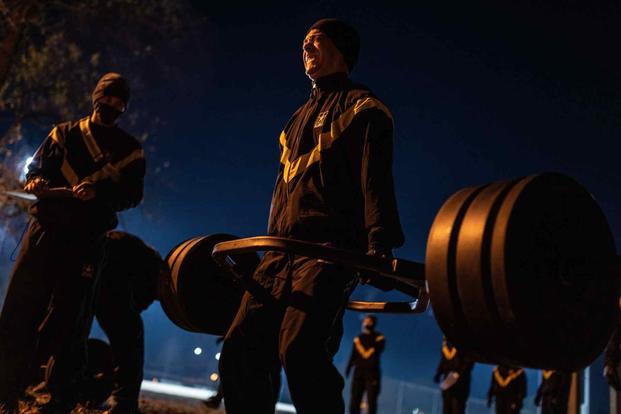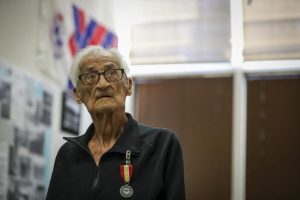A controversial proposal that would force the Army to return to its old, and what service leadership argue is inferior, fitness test would allow for some changes, including swapping out events, according to legislative language released Tuesday.
The Senate Armed Services Committee unveiled the specifics of its proposed National Defense Authorization Act, or NDAA, which would direct the service to immediately revert back to the Army Physical Fitness Test, or APFT, developed in the 1980s and its standard measure until last year.
The bill gives the Army room to change the events and scoring standards for the APFT, including adding events from the current fitness test, but only after at least a two-year period of a pilot and a briefing to lawmakers from the Army secretary. It also says the service can continue conducting the Army Combat Fitness Test, or ACFT, as an unofficial assessment. But in practice, it’s unlikely units would bother with off-the-books fitness tests.
“Nothing in this section prohibits the Army from using the Army Combat Fitness Test, or any other physical assessment the Army may develop, as a supplemental tool to assess physical fitness for all or parts of the force,” the legislation reads. “Army Commanders may also require higher standards than the Army-wide grading scale for promotions, awards, schools and similar actions. Such supplemental assessment shall not constitute the baseline physical fitness assessment of record for the Army unless it is incorporated into the Army Physical Fitness Test.”
The change to the test was penned by Sen. Tom Cotton, R-Ark., who successfully lobbied the committee to amend the draft defense policy bill. Cotton’s changes also authorize commanders to set higher standards in situations if they see fit, but the bill did not detail what level of command would have that authority.
Cotton’s office did not immediately return a request for comment. The NDAA is far from becoming law and will likely see several changes as both chambers negotiate a final bill for the president to sign.
The idea has caught Army leadership and those tracking the decade-long saga of transforming the service’s fitness test by surprise. The ACFT has been tweaked several times since soldiers started testing it in 2019 and it became the official test in October. While ideas on how to adjust the test are plentiful on social media and across the rank and file, reverting back to the APFT hasn’t been part of the debate.
Cotton’s plan, when the broad strokes were unveiled last month, immediately elicited the ire of Sergeant Major of the Army Michael Grinston, who told reporters in June that the going back to the APFT is “unreasonable” and “doesn’t make any sense.”
“It would just take us into chaos,” said Grinston, the service’s top enlisted leader.
In June, Military.com reported on the proposal to scrap the ACFT contained in a draft summary of the NDAA, but Tuesday was the first time the details of the proposal have been made public.
Cotton, an Iraq and Afghanistan war veteran who served as an infantry officer, has long blasted the Army for what he argues are relaxed fitness standards — mostly over the service not having gender-neutral standards for its new test. The previous test also had different scoring scales based on gender and age and would stay that way if his proposal became law.
“The new standards are pathetic,” Cotton told Army Secretary Christine Wormuth at a May 2022 hearing. “They are absolutely pathetic.”
Meanwhile, the House NDAA is proposing its own changes to the Army fitness test, much more akin to what the service has already been mulling behind the scenes. That proposal sets gender-neutral standards for combat arms jobs such as infantrymen and cavalry scouts.
The ACFT is a six-event test measuring a soldier’s maximum deadlift; hand-release push-ups; a plank; a timed two-mile run; an event in which soldiers throw a 10-lb. ball as far as they can; and another event that involves sprints, carrying two 40-lb. kettlebells, and dragging a 90-lb. sled.
Broadly, the ACFT is considered easier to pass, though much more difficult than the APFT to earn a high score, which can be critical for advancement.
The old test included only a two-mile run, push-ups and sit-ups. Part of the motivation for the new test was to promote a diversity of workouts in the force. For decades, most Army workouts centered around running. While that still plays a major role, soldiers are now lifting weights, swinging kettlebells and performing more exercises that involve heavy weights during organized training than in years past.
— Steve Beynon can be reached at Steve.Beynon@military.com. Follow him on Twitter @StevenBeynon.
Please rate this CIBA article
Vote






